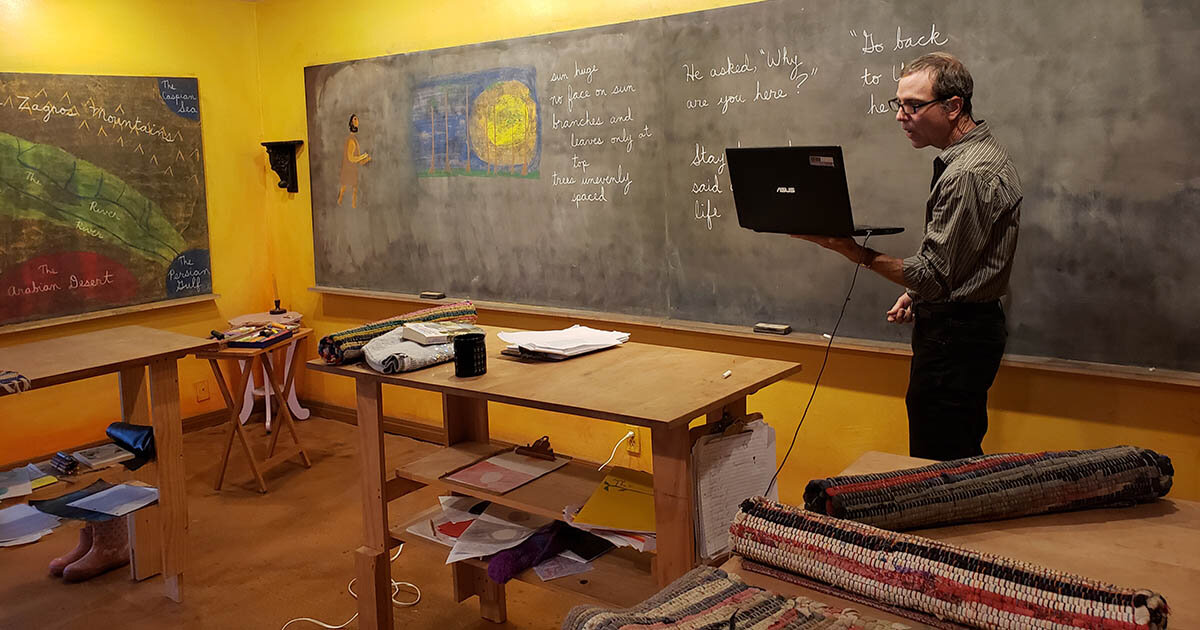A chat about AI and the new learning landscape
/Photo by Levart_Photographer on Unsplash
You’ve probably seen funny, intriguing, or scary news items popping up over the past few weeks about Artificial Intelligence (AI) in the form of ChatGPT, Claude, LLaMA, and other interfaces. You might have heard podcasters explaining or bemoaning the revolutionary new world that’s about to replace our old one. At this point, for me, it’s all still pretty confusing in terms of how it will affect my day-to-day life, but I’m curious and very cautiously optimistic.
One thing that’s pretty certain: Our kids’ lives will be dramatically shaped by AI—and in ways we can’t possibly predict.
In education, two big names—Khan Academy and Duolingo—announced last week that they are on board the ChatGPT train, having been granted early access to develop and test ideas. We’ve already seen both learning platforms suggest some of the benefits they anticipate for learners and educators, but let me preface this short summary by saying I have no idea what the real-world educational outcomes will be because we are so early in the exploration stage. Having said that, here’s a rundown of what’s happening at Khan Academy and Duolingo, along with some links that will take you on a deeper dive, if you’re interested.
ChatGPT-4, which stands for Generative Pre-trained Transformer 4, is a sophisticated AI model that can understand the context of questions and create written responses that are much more “human-like” than past versions. Khan Academy, a nonprofit dedicated to free, high-quality education for all, has been around since 2008 and is well known in the alt ed community for its library of outstanding YouTube video lessons on math and a vast array of other subjects. Duolingo is a for-profit language learning company that has been on the scene for 12 years. Duolingo teaches more than 100 languages to people all over the world in gamefied lessons, primarily through phone apps.
There is a free version of Duolingo, but the new AI-assisted features will be offered only within a $30-per-month paid premium version. These features will offer learners more detailed explanations of how a language works in a feature called Explain My Answer. But most fascinating and useful will be the option for learners to role-play and interact with the AI tool like a personal tutor. After a conversation, users will get specific feedback they can use to improve their responses in their next Duolingo conversation or in real life.
Even more powerful possibilities seem to lie in the approach Khan Academy is taking to this new AI tech. Khan is calling its AI-powered platform Khanmigo. It is still in the development stage and open primarily to educators and school districts that are already working with Khan Academy on other projects, but it’s likely that more and more features will be rolled out to ordinary users in the near future.
Because each learner is different, the value of Khanmigo is that it will immediately adapt its tutoring in any subject to meet the individual’s needs, just like a one-on-one tutoring session with a human teacher. So, if a student is struggling with a particular type of math operation, Khanmigo will ask questions that direct the student toward a deeper understanding, rather than providing quick answers. And if a student needs to understand a controversial current news story, the Khanmigo tutor could gather information in order to debate multiple sides of the issue with the student in real time.
Khan Academy also wants its AI tool to become a valuable assistant for educators as well as students, removing some of the time-consuming work of lesson planning and grading so that educators can spend more time engaging with each student.
Sensibly, the folks at Khan are carefully communicating with users and adapting their projects to make sure they are safe and that kids are truly getting an enhanced learning experience rather than simply getting all the answers to their questions from Khanmigo. The short demonstration founder Sal Khan did on YouTube reminded me of a Socratic back-and-forth between students and teachers.
Next week, I’ll take a look at the world that’s opening up for students with disabilities as a result of AI learning tools. If you have hopes, fears, or experiences to share regarding AI and learning, please comment!
Here are a few links to learn more:
John Fensterwald, “AI in School: Virtually Chatting with George Washington and Your Personal GPT-4 Tutor,” EdSource, March 20, 2023.
Khan Academy, “GPT-4 In-Depth Demo,” March 14, 2023 (YouTube video).
Aisha Malik, “Duolingo Launches New Subscription Tier with Access to AI Tutor Powered by GPT-4,” TechCrunch, March 14, 2023.
John Spencer, “We Can’t Predict How AI Will Change Learning,” February 4, 2023 (podcast).
Tyler Cowen, “AI Is About to Transform Childhood. Are We Ready?” Bloomberg, March 16, 2023 (opinion); and “How to Learn and Teach Economics with Large Language Models, Including GPT,” SSRN, March 17, 2023 (academic paper, with Alexander T. Tabarrok).
Ray Schroeder, “AI Is Impacting Education, But the Best Is Yet to Come,” Inside Higher Ed, March 15, 2023 (opinion).
Shelley Sperry | Sperry Editorial




























